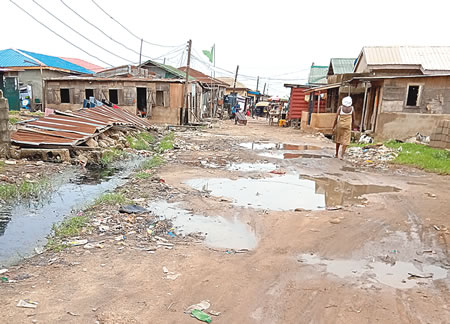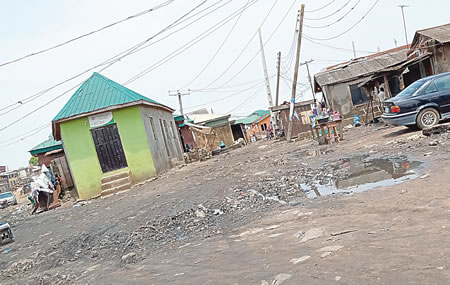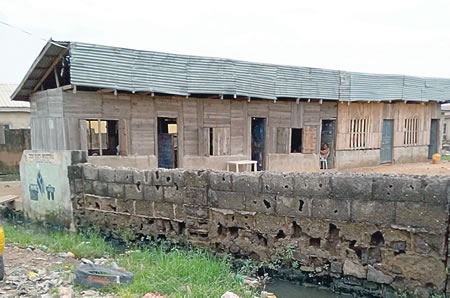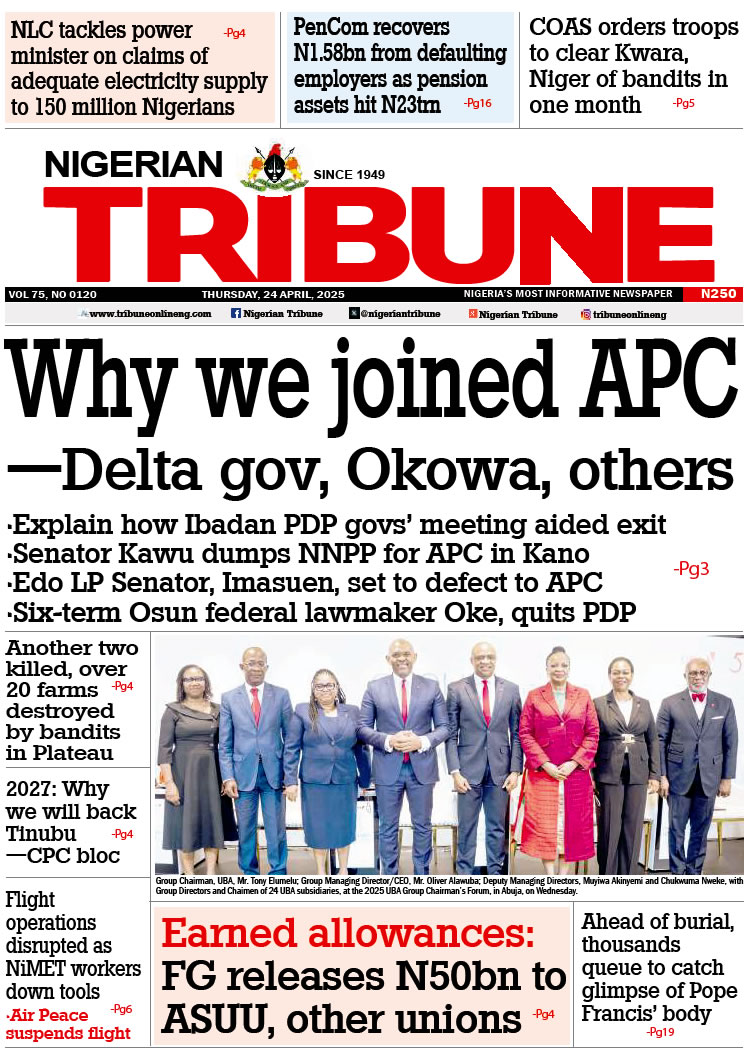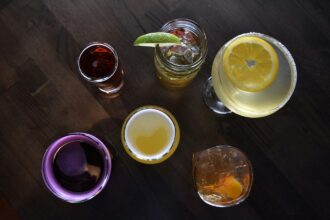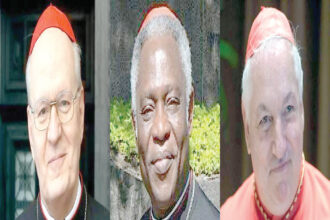BARIGA, a popular district suburb in Lagos, has a varied reputation. To some, Bariga, made one of the Local Council Development Areas of Lagos State (LCDA) in 2013, is the home of legendary secondary schools such as the CMS Grammar School and another phenomenal institution, the Methodist Boys’ High School. Interestingly, CMS Grammar School is the oldest secondary school in Nigeria and has given Bariga a grand reputation.
To some others, Bariga is the home of movie stars and music icons. The names that readily add verve to this reputation of Bariga are Abolore Akande, a songwriter and performer that held the Nigerian and international music scene spellbound with numerous hits under the brand name 9ice; Olamide Oyedeji, a huge music star that operates with the name Olamide and Olamide’s protege, Ololade Keshinro, popularly known as Lil Kesh.
But beyond these inimitable entities that readily bring Bariga community to mind, there are slums that many people will not want to associate with, also found in the area.
4 Nigerians, Dangote, Adenuga, Alakija, Rabiu among 13 richest Blacks on earth
Our photojournalist visited the Bariga many people do not know. He returned with a story of a community still far from modernity caused either by neglect by successive governments in the former Somolu Local Government Area or Lagos State or by people driven to the extremes of life and living by poverty and want. Our photojournalist came with a story of flood, filth, disease and unforgiving elements which becloud the schools, streets and homes that dot the unkempt coastline.
Bariga community is surrounded by water from the costal lines along the Third Mainland Bridge, and is neighbour to Gbagada and Shomolu.
Our photojournalist visited nearly 50 Bariga streets to be able to have a firsthand feel of the area. The four-hour walk brings this community located in a mega city into the spotlight.
As the pictures show, the situation of the community says a lot about the sufferings of the people living there. They are poor and downtrodden and have no voice. But one thing that is in abundant supply is survival instinct – the will to survive no matter what. Most of the inhabitants of downtown Bariga are artisans, fishermen and women, traders, unemployed and a few paid workers.
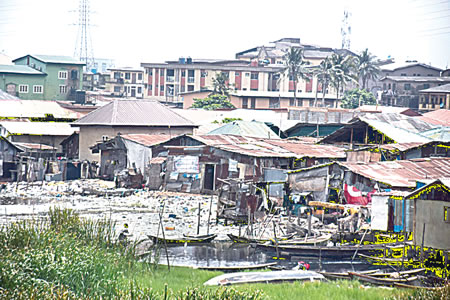
Bariga can be accessed from Shomolu or through Oworonshoki, through Bariga Road or through Gbagade or through Igbako Road. The area is divided into two: uptown and downtown Bariga. The uptown has areas like Bariga Road, Bariga Market, down to Odunsi Road. All houses located off Odunsi Road are downtown Bariga with popular streets like Arogbadade and Alhaja Alimi.
Downtown Bariga, which is close to the coastal line along the Third Mainland Bridge lacks the necessary infrastructure to assist the community live a better life. Although it has electricity, the area lacks good roads, hospital, schools, good drainage system and waste disposal system.
Ninety per cent of the roads are bad. The only good roads are the newly constructed Ilaje Road which leads to the newly constructed Ebutte/Bariga Water Jetty; the Bariga Road and a few streets. But at downtown Bariga, it has been tales of decay and abandonment for the past 20 years.
The Lagos State government facilities in this community that can be seen are the Ilaje smoked fish market, the newly constructed Ebutte/Bariga Water Jetty, the Adeife Sodipo Akindeko Primary School and the secondary school.
In downtown Bariga, streets like Ayoola, Olatunji, Ayedun, Arogbadade, Adedoyin, Benadde, are ‘blessed’ with roads that are impassable. Even okada riders find it difficult navigating these roads. Some are totally bad that even accessing them on foot is like wading through the swamps. To help themselves, the inhabitants pour waste on the bad roads which more often than not worsens the condition of the roads. The most affected are schoolchildren who walk the roads on a daily basis. Those who live on streets like Olatunji Bendade, which are close to the coastal lines, and the shanties on the Lagoon are the worst hit. They suffer from perennial flooding, being the destination of all the rain waters from uptown Bariga.
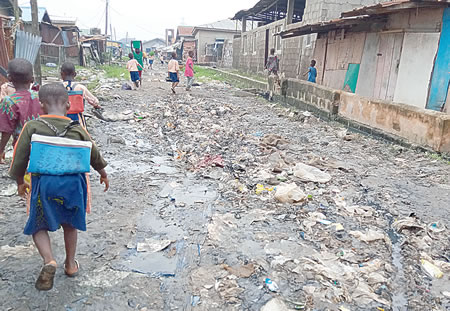
Our photojournalist noticed that there were a number of abandoned buildings, an indication that some of the inhabitants who could not cope had left the area. High fences were generally built there to prevent flood waters from entering the houses. The foundations of some of the buildings seemed to be giving way as they did not look sturdy or firm as a result of perpetual flooding.
A striking feature of the community, which is inhabited by Yorubas and members of a few other tribes, is a preponderance of white-garment churches.
Those living by the coastal lines are believed to be doing so in contravention of the federal laws that stipulate building of residential houses about five kilometres away. They are said to have been driven by the desperation to sleep under their own roofs.
Twelve communities make up Bariga. The Baale of Abule Okuta and Vice Chairman, Bariga Council of Baales, Chief Wasiu Jinadu, gave a brief history of the town to Saturday Tribune. He said earlier settlers in Bariga, which parades inhabitants such as the Aworis, the Ilajes and many more, arrived in the area around 1630 AD.
The town, he said, always choose its Oba from the twelve villages, which are Abule Okuta, Bariga, Apaleyin, Mafo Owoku, Obanikoro, Adaramijo, Pedro, Aiyetoro, Felodun, Owode, Isale Akoka and Ilaje
Chief Wasiu Jinadu, the Bale of Abule Okuta, in sharing the history of his domain, said the early settlers were from Ife Awori. According to him, they settled in Bariga in the 17th century and were mostly fishermen so the need to be close to the river so other settlers like the Ilajes and others also settled in the area and so there were 12 villages with their respective Baales who were then controlled by the Oba of Shomolu.
Chief Jinadu added that though the community lacked some basic amenities, the Lagos State government had tried in the areas of provision of some amenities like borehole, schools, hospitals and funds for young artisans to start up their businesses. We look forward to more dividends of democracy from the Lagos State government,” he said.
Some resident who spoke to Saturday Tribune called for urgent government intervention in terms of sand-filling of the coastal lines to protect the inhabitants from the effects of ocean surge, just as they said the area was in dire need of passable roads, drainages and a cleanup of the coastal lines which harbour lots of waste that poses a threat to the ecosystem.

